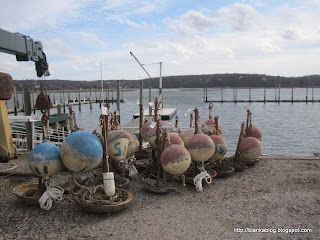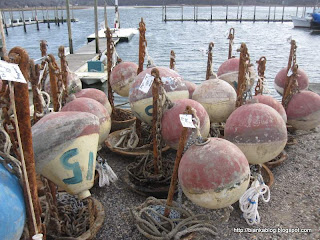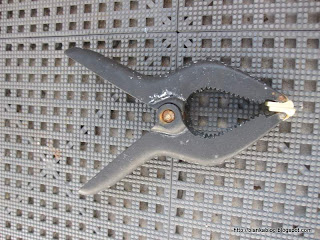"I mixed a drink and went out on the balcony to sit down. The town still looked deserted. Far out on the horizon I could see the neighboring island of Culebra, and from somewhere in that direction came the shuddering thump of explosions. I recalled Sanderson telling me that Culebra was an aerial
bombing range for the U.S. Navy. Once it had been a magic place, but no longer."
Hard to believe that this peaceful little island was used for target practice by the U.S. military but, it was for many years. I had heard about the demonstrations against the practice on nearby Vieques but, had never heard about Culebra. The practice started in 1939 in preparation for World War II. It seems the topography of the island and it's beaches were excellent training grounds for the invasion of the Pacific Islands by U.S. forces. By 1971 the people of Culebra had had enough and started protesting. In 1975 operations were switched to Vieques.
Culebra to my mind has once again become a magical place and one that I hope to get back to soon hopefully with BIANKA. The magic on our second morning started for me as I awoke a little before dawn and witnessed a real nice sunrise to start the day:
Capt. Billy and Pat went into town looking to provision up with some ingredients for salads. Being an arid island most produce comes in by ferry from the Puerto Rico mainland. Though there was some mechanical problem with the ferry and it did not operate the previous day. Things were a little up in the air and the island suffered an economic hit because the Puerto Ricans from the mainland were not able to get the Culebra for the weekend as they usually did. So the island was pretty quiet even though it was a holiday weekend. We decided to take a two hour tour around the island with one of the local taxi drivers. He took us up into the hills where we enjoyed some real nice vistas:
and traveled down to the other side of the island to visit some of the lovely beaches including Flamingo Beach. Which is just as pretty from the air:
as it is from the shore:
The next morning the magic continued as just before breakfast a beautiful rainbow seemed to emanate from the middle of the harbor:
Since this harbor was a known hangout for pirate ships it was very easy to assume that some pots of gold plunder might be located on the bottom of the harbor at the end of the rainbow.
Culebra has just about everything a cruising sailor might need especially those who don't need the nightlife of a San Juan or St. Thomas or some of the British Virgin Islands. There is a grocery store and a farmers market with a fellow who comes over by ferry one day a week. There will soon be two places where one can get fuel. But, a lot depends on whether the ferries are running. So one needs to be aware that schedules and supplies do not always coincide. But, there are a few bars where one can go to mingle with other cruisers. Including one appropriately named The Dingy Dock:
A restaurant and bar with a great waterfront view. You can easily tell when it's happy hour by all the dingies tied up to the dock:
There is a convenient cut across the island with a lift bridge that is opened once a year to make sure it is working. It's height and water pipe prevent most cruising boats from using the cut.
It is however convenient to take a dingy to the other side of the island to visit some of the very beautiful snorkeling and dive sites around Culebra. Which is why we came here in the first place. Here are some videos I took with my
GoPro camera snorkeling some of the reefs off of Culebra:
Though the videos do not really do justice to how nice most of the reefs around the island really are. Our original plans called for us to stop at Culebra and then head off to Vieques and finally sail the the Puerto Rico mainland and getting off the boat at Farado. But, once we got to Culebra the feel of the place and beauty of the reefs made us decide to just stay here for the rest of the charter. Culebra is certainly a place I will want to come back to.

























-2.jpg)










.jpg)


